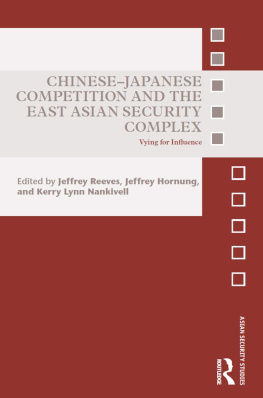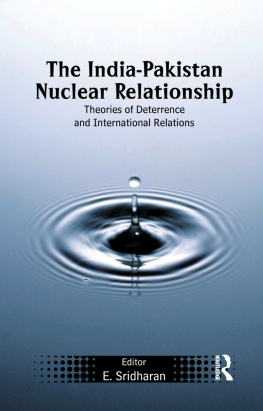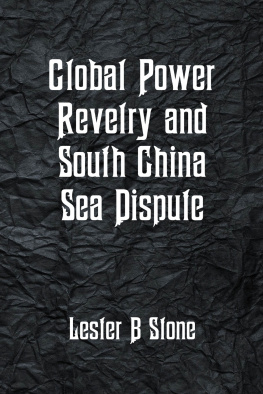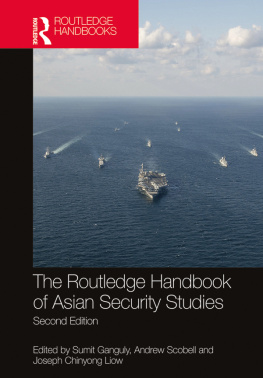First published 1997 by Ashgate Publishing
Reissued 2018 by Routledge
2 Park Square, Milton Park, Abingdon, Oxon, 0X14 4RN
52 Vanderbilt Avenue, New York, NY 10017
Routledge is an imprint of the Taylor & Francis Group, an informa business
Copyright Research Institute for the Study of Conflict and Terrorism 1997
All rights reserved. No part of this book may be reprinted or reproduced or utilised in any form or by any electronic, mechanical, or other means, now known or hereafter invented, including photocopying and recording, or in any information storage or retrieval system, without permission in writing from the publishers.
Notice:
Product or corporate names may be trademarks or registered trademarks, and are used only for identification and explanation without intent to infringe.
Publishers Note
The publisher has gone to great lengths to ensure the quality of this reprint but points out that some imperfections in the original copies may be apparent.
Disclaimer
The publisher has made every effort to trace copyright holders and welcomes correspondence from those they have been unable to contact.
A Library of Congress record exists under LC control number: 96040481
ISBN 13: 978-1-138-35291-9 (hbk)
ISBN 13: 978-0-429-43437-2 (ebk)
Contents
Introduction
I
All the eleven chapters in this volume are carefully selected Conflict Studies papers published during the period between 1988 and 1995, a momentous phase when the edifice of the Cold War collapsed and the post-Cold War era began to crystallize. As an era of uncertainty and hope it evoked a worldwide scholarly response in order to fathom the exact nature of this transformation so that national priorities could be adjusted accordingly.
Logically, this rather abrupt cessation of hostilities between the two superpowers should have heralded an era of peace and stability since much of the earlier tensions were viewed as Cold War-generated. But that did not happen. The outbreak of the Gulf War and the persistence of rivalries between and among states, particularly in the Third World, tended to suggest that it was business as usual. Moreover, the break-up of the Soviet Union and the loosening of its grip over its erstwhile empire gave rise to fresh ethnic and communal animosities. Another realization was that the end of bipolarity did not actually result in unipolarity of the world. On the contrary there was an evolving multipolarity in which the United States figured significantly but not exclusively.
This multipolarity expressed itself in various ways. While, on the one hand, its unit of expression was national, as in the case of China and to some extent of Germany and Japan, on the other its articulation became essentially regional, as in the cases of the European Union, the ASEAN, the APEC and so on. The cacophony thereby created demanded new approaches to international security. Thus while a universal UNism was expedited to tame a recalcitrant Saddam Hussain only a Eurocentric UN exercise of limited efficacy was employed to provide succour to the bleeding Bosnians. The so-called New World Order which George Bush had so fondly pioneered came to mean different things to different people.
In the populous and volatile regions of South and East Asia on which this volume focuses the forces of both nationalism and internationalism worked side-by-side. On the one hand there was serious international concern over certain problems such as those of Cambodia and the nuclearization of India, Pakistan and North Korea; on the other, there were strong nationalistic thrusts on military power to settle unresolved regional issues. At yet another level all these developments were overtaken by an irresistible popular pressure for economic integration with the global system, often without any corresponding commitment to political freedom. The cumulative effect of these diverse processes was a curious mix of international rivalries and national revolutions.
II
A question that is raised these days is whether the world is fast heading towards an Asian century. Unlike the eighteenth and nineteenth centuries when world events used to be dictated by what happened in Europe, about which Immanuel Wallerstein theorized so forcefully, the twenty first century is likely to be influenced by developments in Asia. It is argued that the process is nearing completion and the entire twentieth century has acted as midwife to this transition.
The arrival of the Asian century found its first manifestation in the early years of the twentieth century. It all started with the Japanese victory over Russia in the Russo-Japanese war of 19045 in which, for the first time in modern history, a European power had to face a humiliating defeat at Asian hands. The psychological impact of the event on other Asian peoples was tremendous. A breeze of pan- Asianism blew over many of the contemporary national movements, the best example of which was India. Sir Henry Cottons New India noted: What an inspiration has been afforded by the character of these Eastern islanders. The example is not lost on India. Indian nationalists asked, May we not also be able to challenge Great Britain some time in the future?.
But, of course, it took many years for the Asian resurgence to crystallize. The convening of the Asian Relations Conference in New Delhi in 1947, and later the articulation of Afro-Asian solidarity at the Bandung Conference of 1955 were its slow but steady steps. The subsequent Sino-Soviet rift, Americas defeat in Vietnam, the rise of Japan as a super economic power with a huge trade surplus with the United States, and lastly, the unprecedented growth of East and South-East Asian NICs as economic powers cemented the concept. In military terms too, the emergence of China as a nuclear power and, in a limited sense, that of India as a regional heavyweight completed the picture.
Any change inevitably also brings its strains. The Asian experience has been no different. It is an analysis of these strains and their undercurrents that constitutes the subject matter of this volume. While underlining the continuing relevance of military power in international affairs the authors have emphasized that it alone does not guarantee national security, nor does it provide the desirable political stability which is an essential prerequisite of power projection. How to harmoniously blend the demands of defence and development is what the Asian concern for a new world order is all about.
III
The chapters of this volume may be classified in three rather broad categories - security-orientated, political economy-orientated, and territorial dispute-oriented. Yet another category is that related to the issue of unification of bifurcated nationalities in which the Korean question has been addressed. It must, however, be quickly added that the categorization here is merely functional and each case study spills into the domains of one or more of the other categories.
Three chapters by K. Subrahmanyam, Michael Leifer and Partha Ghosh are primarily security-focused. Subrahmanyams essay () concentrates on Indias security in relation to the threat posed by Chinese ambitions which are expressed more by deeds than words. His principal concern is Chinese duplicity.














